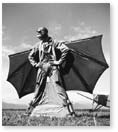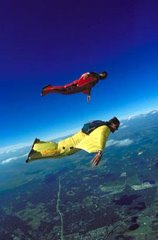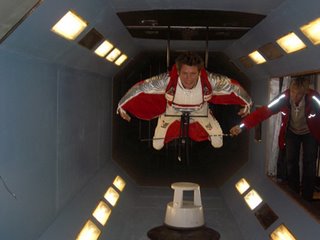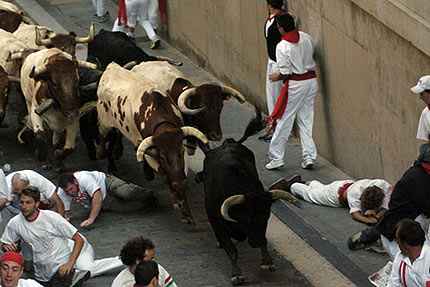 People, I need your help. The picture here, it seems, shows one Cecil MacKenzie. The photo appeared in Canadian Geographic with the following text: "May 24, 1912. Might as well jump: Wearing bright red tights and a leather helmet, Charles Saunders makes the first parachute jump from an airplane in Canada, over Vancouver, beating out bat-suited Cecil MacKenzie for the honours." Now, to me this reads as if MacKenzie made one of the first Canadian parachute jumps shortly after Saunders, if not immediately after him in some kind of race. Bat-wing jumping, though, did not happen till Clem Sohn hit the scene in 1935. And the picture is clearly from a later period, proabably the late sixties. My guess is that Canadian Geographic wanted to include a funny picture with the their timeline and threw this in. I've tried to get a response from someone at CG, and I've tried to find mention of MacKenzie in newspapers and elsewhere (meaning, you know, Google), all to no avail. So this is a call to all wingsuiters, all parachutists, and all Canadians: Help me find something, anything, about Cecil MacKenzie, who had some of the coolest wings in the long history of birdmen.
People, I need your help. The picture here, it seems, shows one Cecil MacKenzie. The photo appeared in Canadian Geographic with the following text: "May 24, 1912. Might as well jump: Wearing bright red tights and a leather helmet, Charles Saunders makes the first parachute jump from an airplane in Canada, over Vancouver, beating out bat-suited Cecil MacKenzie for the honours." Now, to me this reads as if MacKenzie made one of the first Canadian parachute jumps shortly after Saunders, if not immediately after him in some kind of race. Bat-wing jumping, though, did not happen till Clem Sohn hit the scene in 1935. And the picture is clearly from a later period, proabably the late sixties. My guess is that Canadian Geographic wanted to include a funny picture with the their timeline and threw this in. I've tried to get a response from someone at CG, and I've tried to find mention of MacKenzie in newspapers and elsewhere (meaning, you know, Google), all to no avail. So this is a call to all wingsuiters, all parachutists, and all Canadians: Help me find something, anything, about Cecil MacKenzie, who had some of the coolest wings in the long history of birdmen.On another note: The book (Birdmen, Batmen, and Skyflyers, in case you don't feel like looking over to your right) is at long last available—at Amazon, on every Barnes & Noble shelf, and, with luck, at your local little tiny bookstore. Buy it, read it if you like! Makes a great gift, works well as wallpaper, excellent material to build a house with if you're lacking bricks. I'll be giving some readings and the like in and around NYC. I'll keep you posted with exactitudes.















